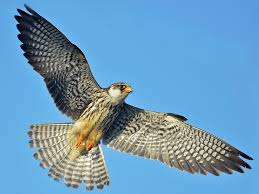Important Facts For Prelims
Tokhu Emong Festival
- 05 Nov 2022
- 3 min read
Why in News?
Nagaland is undertaking four-day Tokhu Emong Bird Count (TEBC), the first avian documentation exercise to go beyond Amur falcons.
- The exercise has been timed with the post-harvest Tokhu Emong festival of the Lothas, the Naga community that dominates Wokha district of Nagaland.
What is Tokhu Emong Festival?
- A perfect blend of religion, culture and entertainment, ‘Tokhu Emong’ is widely celebrated in Wokha district.
- Celebrated on 7th November every year, this color-filled festival stretches over to 9 days.
- ‘Tokhu’ means moving from house to house, collecting tokens and gifts in form of naturals resources and food. However, the meaning of ‘Emong’ is to put a halt for the appointed time.
- Significant attraction of this festival includes community songs, dances, feast, fun and frolic.
- Through the commencement of this festival, people relive the stories of their ancestors composed decades before.
- During the festival, gracious offerings are made to the ‘Sky God’ and ‘Earth God’ seeking for blessings.
What are Amur Falcons?
- Amur falcons, the world’s longest travelling raptors start travelling with the onset of winters.
- The raptors breed in southeastern Siberia and northern China, and migrate in millions across India and then over the Indian Ocean to southern Africa before returning to Mongolia and Siberia.
- Their 22,000-kilometre migratory route is one of the longest amongst all avian species.
- They get their name from the Amur River that forms the border between Russia and China.
- Doyang Lake in Wokha, Nagaland is better known as a stopover for the Amur falcons during their annual migration from their breeding grounds to warmer South Africa.
- Thus, Nagaland (Pangti Village) is also known as the "Falcon Capital of the World".
- The birds are the least concern under the International Union for Conservation of Nature (IUCN) Red List, but the species is protected under the Indian Wildlife Protection Act, 1972, and the Convention on Migratory Species, to which India is a signatory (which means it is mandatory to protect the birds).
Source: TH





